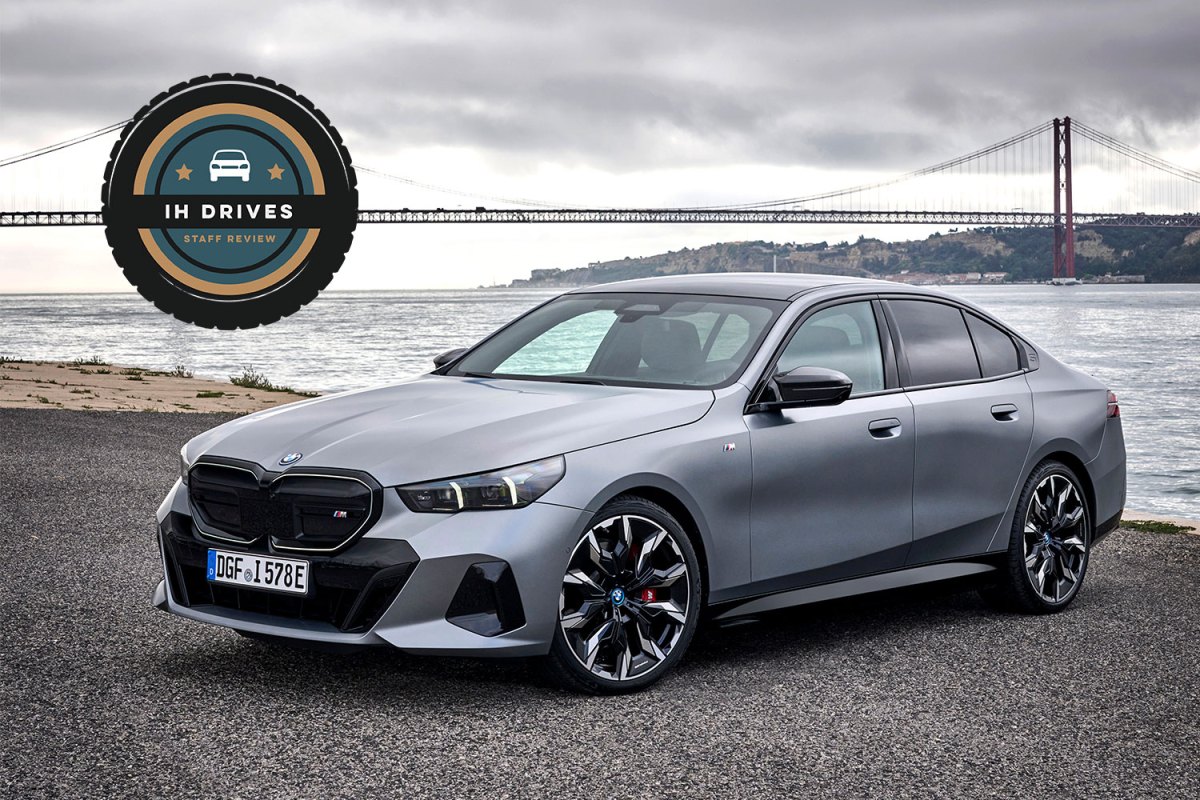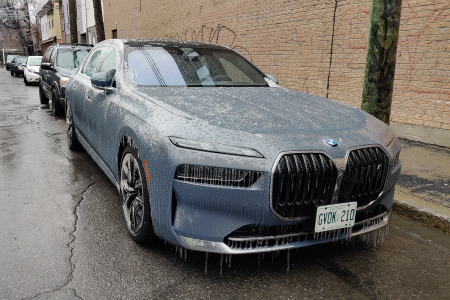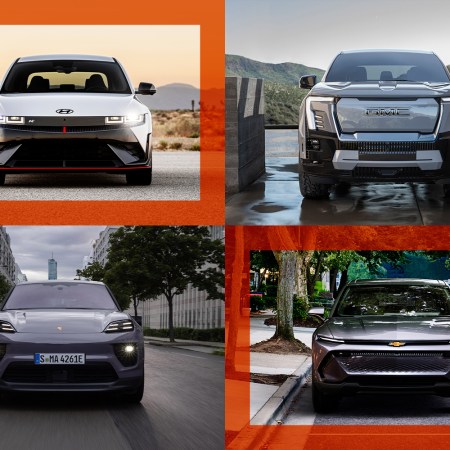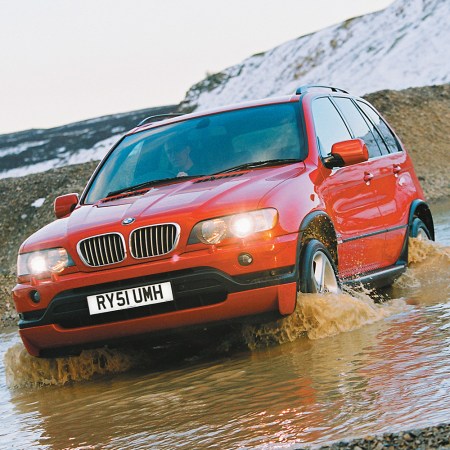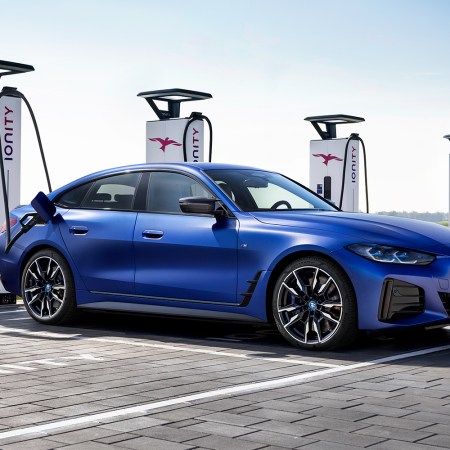Perhaps more so than any of its luxury peers, BMW’s approach to electrification has been to design vehicles that would fit into its lineup regardless of whether they were burning hydrocarbons or scarfing down electrons. Building on earlier outlier efforts like the i3, a modern BMW EV eschews the drastic wind-tunnel concessions made by rivals like the Mercedes-Benz EQ series, retaining an instantly-identifiable profile that is in some cases polarizing, and in others lifted directly from the internal combustion side of the showroom.
Ultimately, this mix-and-match of its gas-powered past and battery-reliant future has made cross-pollination a major part of the BMW electrification strategy. Moving beyond conversion cars like the (still excellent) i4, the automaker is now centering its efforts on multi-purpose platforms that are equally at home having an engine between the front fenders or e-motors stuffed into individual axles. Yes, EV-only efforts are still in the mix at BMW, but the primary play is a versatile approach to vehicle development that allows many of its models to play both sides of the carbon coin.
| Vehicle | 2024 BMW i5 |
| Trim Tested | M60 |
| Starting Price | $85,095 |
| Price of Model Tested | $89,595 |
| Vehicle Type | Electric four-door sedan |
| Motors | Front and rear motors, 593 hp and 549 lb-ft torque (605 lb-ft with M Sport Boost or M Launch Control engaged) |
| Range | 256 miles |
| Availability | As of fall 2023 |
Perhaps the purest expression of this duality is the new 2024 BMW i5 M60. Conceptually, it aims to replace the thoroughly-excellent, previous-generation M550i model’s V8 charms with a hammerfist electric-performance drivetrain that bridges the gap between the turbo-six base model BMWs and the yet-to-arrive (and electrically-assisted) gas-burning M5 range-topper.
At first blush, it’s a convincing act: the underpinnings of the i5 M60 are a direct lift from its ICE siblings, and only a smidge of missing trunk space provides a static indication that a battery pack resides where driveshafts and transmissions once held court. On paper, its 593 horsepower and 549 lb-ft of torque present a formidable counter-argument to the departed pleasures of a twin-turbo V8, and the M-signifier in its badge holds promise of handling that’s above a standard EV’s station.
In order for any of the i5 M60’s posturing and positioning to matter, however, it all has to come together out on the road. Fortunately for BMW, it’s from the driver’s seat that the EV proves to be one of the most compelling options for upscale buyers.
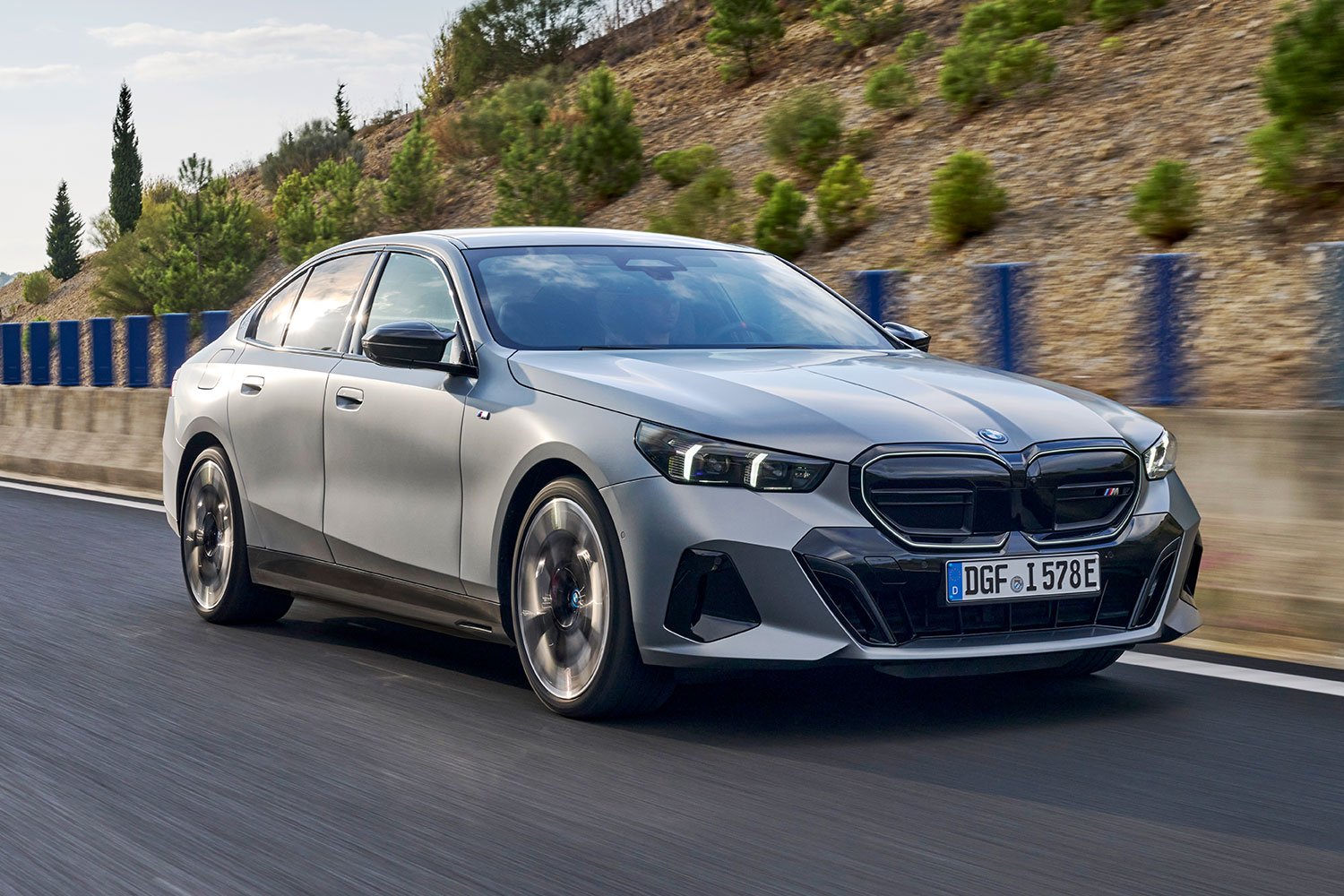
Avoiding Over-the-Top
As the market continues to slowly transition towards a battery in every driveway, the best case an EV can make for itself among newcomers to the concept of gas-free driving is to accentuate the positives of electrification while making its more unusual aspects as transparent as possible.
It’s in this context that a casual drive of the BMW i5 M60 truly shines. Unlike other high-performance electric sedans (such as the same size, but more expensive, Mercedes-AMG EQE), the M60 doesn’t feel the need to throw its megadose of instant-on torque in the face of its pilot and passengers at every opportunity. Instead, accelerator tip-in is smooth and measured, making it easy to light-foot around town without straining neck muscles (or familial relationships) via unwanted applications of G-force.
Review: Surviving an Ice Storm Blackout in the BMW i7 EV
No power turned out to be no problem for the brand’s flagship electric vehicleWhen the time comes, however, the mightiest iteration of the i5 doesn’t hold back. You may want to invest in a neck brace if you decide to launch the car with its Boost function engaged (via a simple steering wheel paddle pull), as that adds an extra 56 lb-ft of torque to the equation for 10 seconds of unfettered forward thrust. You’ll see 60 mph in under four seconds, even when riding on the winter rubber my tester was wearing to better deal with cold roads, but I found myself even more in awe of the M60’s boost-ability when using it to reel in the horizon on highway access ramps.
The car clawed its way towards triple-digit speeds so quickly that I barely had time to register that we were fast approaching its 143 mph top speed, despite the (optional) Hans Zimmer soundtrack that plays over the i5’s speakers when attacking the right pedal. The Boost function was a godsend on tighter two-lane roads, too, with slower traffic easily dispatched even when facing down the slightest of passing zones.
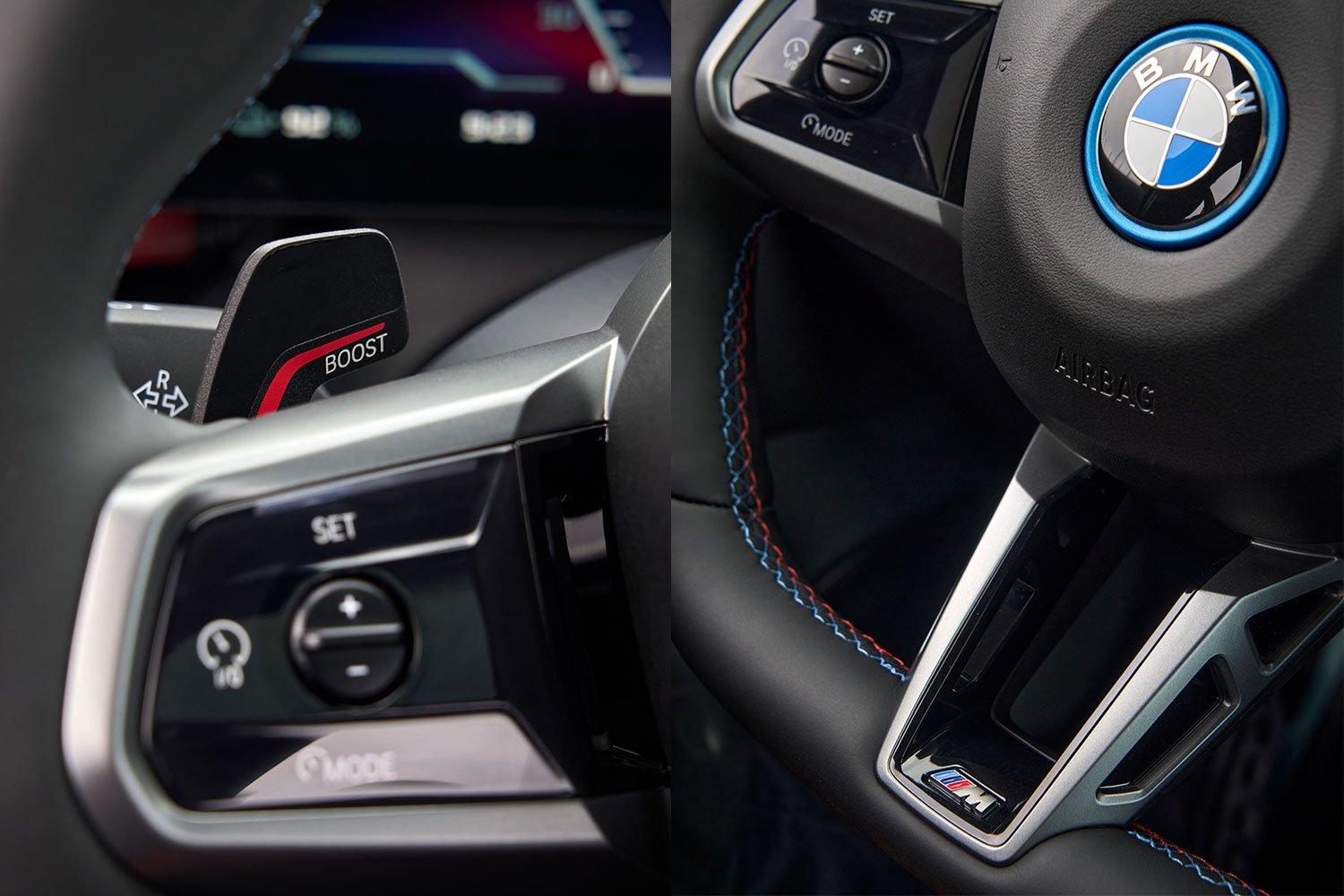
Here’s the Beef
Where the i5 does regularly let on that it’s been designed for super-legal speeds is its suspension setup. There are multiple drive modes available in this BMW, ranging from Efficient to Digital Art (which doesn’t so much affect performance but does splash an eye-catching design across both of its dashboard screens, as well as updates the color pattern of the cabin panels that wrap around the passenger compartment), but regardless of which option is selected the vehicle rides heavy over frost heaves and is all too willing to bounce and boom its tires over uneven asphalt. It’s not an uncomfortable conveyance by any stretch, but the vehicle’s adaptive suspension is better suited to smoother surfaces.
That being said, handling for the M60 is convincingly capable. This is a heavy car — you’ll see over 5,200 pounds should you roll the sedan across a scale — and while most of that weight is positioned low, it still informs the general envelope of the automobile. I had no problem sticking the i5 to the road under any conditions, even when dealing with a rain and snow-slicked two-lane (thanks in large part to its all-wheel drive system), but it would be a stretch to label its personality as “fun.” Think more ruthlessly competent than utterly engaging, and you have the general idea of what it’s like to flog the M60, putting it just a half-step behind the thousand-pound lighter M550i of yesteryear when it comes to encouraging white-knuckle errands.
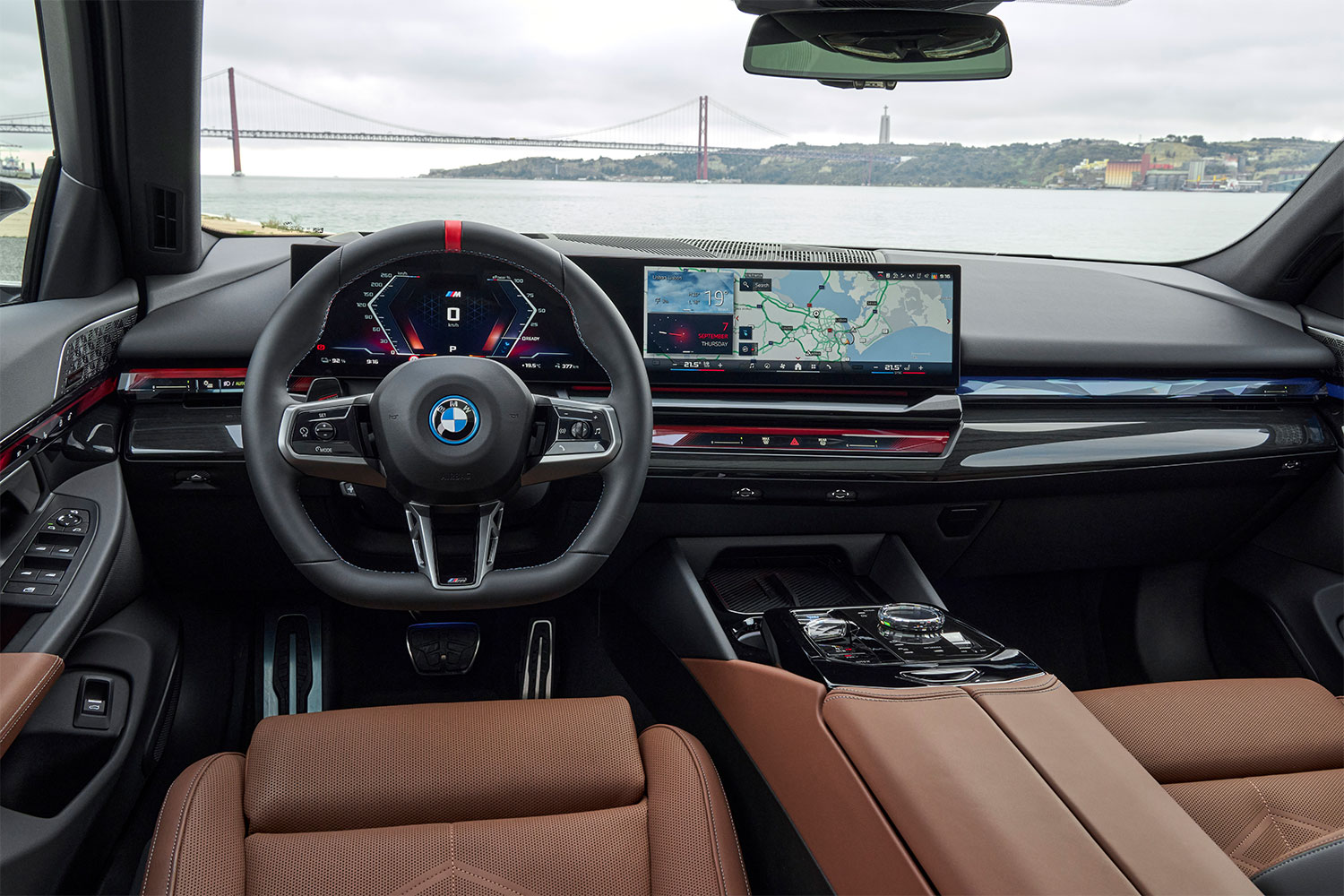
Middling Range, Good Cold-Weather Efficiency
The $84,000 BMW i5 M60 is advertised as being good for 256 miles on a single charge, thanks to its large 84.3-kWh battery. That’s certainly a usable amount of driving, but it’s middle of the pack when considering the EV space as a whole — and about 40 miles less than the more modest, $67,000 eDrive40 edition of the i5 (or the previously-mentioned Mercedes-AMG model).
Despite cold temperatures during my test period, the i5 delivered 222 miles or so per charge, which is quite good when operating around the freezing point (where batteries lose efficiency and projected range begins to drop). The vehicle’s braking regeneration was effective at keeping the power pack topped up, and I also made two pit stops for public Level 3 charging, where I saw a maximum speed of 76 kW on a non-preconditioned battery. Under ideal conditions, the car is rated to charge at a maximum of 205 kW, although that speed will begin to slow as the battery approaches the 100% mark to help prevent long-term damage.
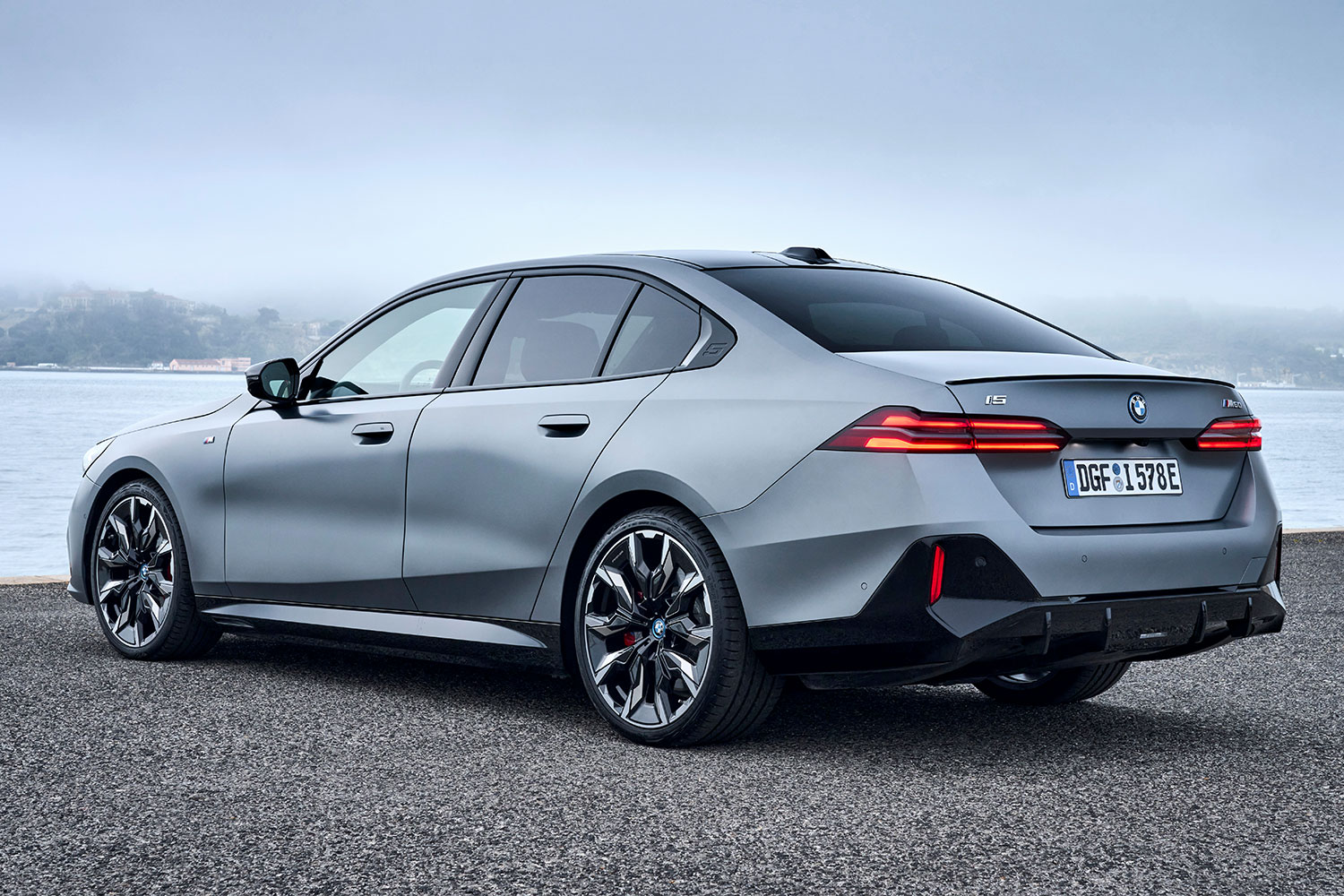
Normalizing the Future
The BMW i5 M60 is an overall success, both as an EV and as a car you’d want to drive on a daily basis. It manages to achieve the former through its solid power delivery and usable, if not class-leading range, while cementing the latter by preserving everything about the overall experience of the brand’s 5 Series sedan that has made it such a strong seller for so many years.
Sure, BMW still loves its gimmicks — there’s an AirConsole feature that lets you play video games while you charge, and of course gesture controls are still lurking to interrupt your podcast listening when you errantly flap your hands — and not all of its tech shots completely land. In particular, its Assist Plus hands-free driving system only works if you have a destination entered into the factory navigation system (not Android Auto or Apple CarPlay), an unusual deviation from front-runners like Cadillac’s SuperCruise which activates at the touch of a button.
Still, this is a comfortable, well-appointed luxury sedan with a fantastic interior that just so happens to be battery powered. By making electrification an afterthought in the minds of the customer (at least until they have to search out a charging station), with the i5 BMW proves that the best path forward towards an EV-laden tomorrow is to simply keep building better cars.
This article was featured in the InsideHook newsletter. Sign up now.
